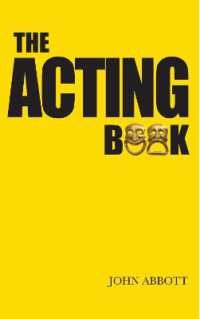- ホーム
- > 洋書
- > 英文書
- > Computer / General
Full Description
With over 50,000 copies sold, The Rust Programming Language is the quintessential guide to programming in Rust. Thoroughly updated to Rust's latest version, this edition is considered the language's official documentation. The Rust Programming Language, 2nd Edition is the official language guide for Rust 2021, and the best way to get started with Rust. The new edition includes a quick-reference section on organizing code with modules, and improved closure examples of captures, the move keyboard, and Fn traits. From web apps to operating systems, Rust is the safe, fast, reliable programming language used for an expansive variety of applications. Revised and updated by the original authors, the second edition of The Rust Programming Language shows readers how to take full advantage of Rust 2021 features, from installation to creating robust and scalable programs. It begins with the basics, like creating functions and binding variables, then moves on to more advanced concepts, like error handling, refactoring, multithreading, and pattern matching. In addition, readers will find advice on updating older Rust code, the latest compiler error-message improvements, and enhanced explanations and examples throughout.
Contents
Foreword
Preface
Acknowledgments
Introduction
Chapter 1: Getting Started
Chapter 2: Programming a Guessing Game
Chapter 3: Common Programming Concepts
Chapter 4: Understanding Ownership
Chapter 5: Using Structs to Structure Related Data
Chapter 6: Enums and Pattern Matching
Chapter 7: Managing Growing Projects with Packages, Crates, and Modules
Chapter 8: Common Collections
Chapter 9: Error Handling
Chapter 10: Generic Types, Traits, and Lifetimes
Chapter 11: Writing Automated Tests
Chapter 12: An I/O Project: Building a Command Line Program
Chapter 13: Functional Language Features: Iterators and Closures
Chapter 14: More About Cargo and Crates.io
Chapter 15: Smart Pointers
Chapter 16: Fearless Concurrency
Chapter 17: Object-Oriented Programming Features
Chapter 18: Patterns and Matching
Chapter 19: Advanced Features
Chapter 20: Final Project: Building a Multithreaded Web Server
Appendix A: Keywords
Appendix B: Operators and Symbols
Appendix C: Derivable Traits
Appendix D: Useful Development Tools
Appendix E: Editions
Index








